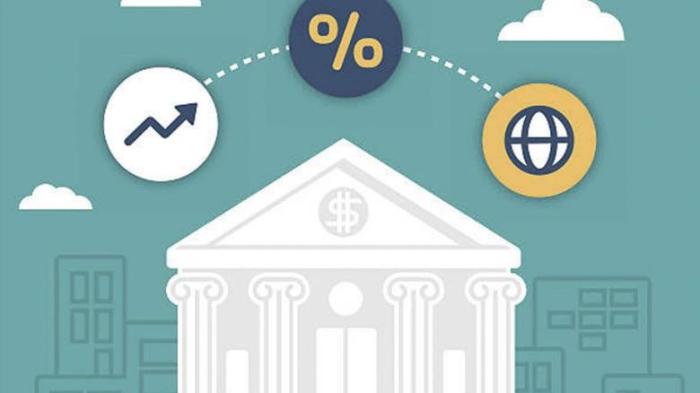
Securing funding for higher education is a significant undertaking, and exploring diverse lending options is crucial for prospective students. While traditional banks are a common choice, credit unions present an often-overlooked alternative for student loans. This exploration delves into the landscape of credit union student loan offerings, examining their availability, eligibility criteria, loan types, interest rates, and application processes. We’ll compare these options to those offered by traditional banks, helping you make an informed decision about financing your education.
Understanding the nuances of credit union student loans can unlock significant financial advantages. Factors such as interest rates, repayment terms, and eligibility requirements vary considerably between credit unions and traditional banks. This detailed analysis aims to illuminate these differences, empowering you to navigate the complexities of student loan financing with confidence and secure the best possible terms for your educational journey.
Credit Union Student Loan Availability

Credit unions, known for their member-centric approach, offer student loans as a competitive alternative to traditional banks. However, their availability varies geographically and depends on the individual credit union’s policies and lending capacity. While not all credit unions provide student loans, a significant number do, offering a potentially beneficial option for students seeking financing for higher education.
Credit union student loan availability is not uniform across all regions. Some areas may have a higher concentration of credit unions offering these loans, while others may have fewer options. Rural areas, for example, might have limited access compared to densely populated urban centers. This disparity stems from factors such as the credit union’s size, its financial health, and the overall demand for student loans within its membership base.
Specific Credit Unions Offering Student Loans
Several credit unions have established reputations for providing competitive student loan products. These institutions often focus on building strong relationships with their members and providing personalized service. Examples include Alliant Credit Union, which serves a nationwide membership, and Navy Federal Credit Union, catering to military personnel and their families. Many state-chartered credit unions also offer student loans, though their reach is typically more localized. It’s crucial to research credit unions in your specific area to determine availability.
Credit Union Student Loans vs. Traditional Bank Loans
Credit unions often present advantages over traditional banks when it comes to student loans. While interest rates can be competitive with banks, credit unions frequently emphasize lower fees and more personalized service. The member-owned structure of credit unions can lead to a more flexible and understanding approach to loan approvals and repayment plans, particularly during financial hardship. However, the loan amounts and repayment terms offered may vary depending on the individual credit union’s policies. Credit unions might have stricter membership requirements than banks, which could limit access for some applicants.
Comparison of Student Loan Offerings
The following table compares the interest rates, loan amounts, and repayment terms offered by three hypothetical credit unions. Note that these are examples and actual rates and terms will vary depending on creditworthiness, loan type, and the specific credit union. Always check directly with the credit union for the most current information.
| Credit Union | Interest Rate (APR) | Maximum Loan Amount | Repayment Terms (Years) |
|---|---|---|---|
| Example CU A | 6.5% – 10% | $50,000 | 5 – 15 |
| Example CU B | 7.0% – 11% | $40,000 | 7 – 10 |
| Example CU C | 6.0% – 9% | $60,000 | 5 – 12 |
Eligibility Requirements for Credit Union Student Loans
Securing a student loan from a credit union often involves a slightly different process compared to traditional banks. While the core principles remain similar – assessing the applicant’s ability to repay the loan – the specific criteria and documentation requirements can vary significantly. Understanding these nuances is crucial for prospective borrowers.
Eligibility requirements for credit union student loans typically center around the applicant’s financial standing, academic progress, and relationship with the credit union. Credit unions often prioritize member relationships, meaning existing members might find the application process smoother and potentially receive more favorable terms.
Credit History and Financial Stability
Credit unions, like banks, often consider an applicant’s credit history. A strong credit history, demonstrating responsible borrowing and repayment, significantly improves the chances of loan approval. However, unlike some banks, credit unions might be more lenient towards students with limited or no credit history, particularly if they have a co-signer with a good credit score. This co-signer assumes responsibility for repayment if the student defaults. The credit union will also assess factors like income, existing debt, and overall financial stability to gauge the applicant’s ability to manage loan repayments.
Enrollment Status and Academic Progress
Credit unions generally require proof of enrollment at an eligible educational institution. This typically involves providing official transcripts or acceptance letters. Some credit unions may also consider the student’s academic standing, such as GPA, to assess the likelihood of successful completion of studies and subsequent employment. The loan amount might be influenced by the program of study and its expected return on investment (ROI). For instance, a student pursuing a high-demand field might receive a more favorable loan offer.
Differences in Eligibility Requirements Across Credit Unions
Eligibility criteria vary considerably across different credit unions. Some may have stricter requirements regarding credit scores or income, while others may offer more flexible options, particularly for their members. Credit unions often tailor their loan programs to serve their specific member base and local communities. A smaller, community-focused credit union might have less stringent requirements compared to a larger, nationally operating credit union. It’s crucial to check the specific requirements of each credit union before applying.
Documentation for Credit Union Student Loan Applications vs. Bank Applications
The documentation required for a credit union student loan application is generally similar to that required by a bank. Both usually require proof of enrollment, transcripts, and possibly tax returns or income statements (if applicable). However, credit unions might place a greater emphasis on verifying the applicant’s membership status and relationship with the institution. Additionally, co-signer requirements might differ, with some credit unions being more flexible in this regard than others. The specific list of required documents will be clearly Artikeld by the individual credit union.
Common Reasons for Student Loan Application Rejection by Credit Unions
Credit unions, like banks, have specific criteria for loan approval. Understanding the common reasons for rejection can help students improve their application.
- Poor credit history: A history of missed payments or defaults significantly reduces the likelihood of approval.
- Insufficient income or lack of co-signer: Inability to demonstrate sufficient income to repay the loan, especially without a co-signer, is a major factor.
- High debt-to-income ratio: Existing high levels of debt relative to income indicate a higher risk of default.
- Lack of proof of enrollment: Failure to provide adequate documentation of enrollment at an accredited institution.
- Incomplete application: Missing required documents or information can lead to rejection.
- Unfavorable academic record (in some cases): A consistently poor academic record might signal a lower probability of successful completion and subsequent employment.
Types of Student Loans Offered by Credit Unions

Credit unions, known for their member-focused approach, offer a range of student loan products designed to help students finance their education. While the specific types and features may vary slightly between institutions, most credit unions provide options to cover various educational needs and stages. Understanding these differences is crucial for selecting the most suitable loan for your individual circumstances.
Credit unions typically offer student loans categorized by the level of study and the borrower’s relationship to the student. These categories allow for tailored loan terms and potentially more favorable interest rates compared to some other lending institutions. The availability of each loan type will depend on the specific credit union’s offerings.
Undergraduate Student Loans
Undergraduate student loans are designed to help students finance their bachelor’s degree programs. Credit unions often offer competitive interest rates and flexible repayment options tailored to the typical income trajectory of recent graduates. These loans can cover tuition, fees, books, and other educational expenses. Some credit unions may also offer additional benefits, such as financial literacy resources or counseling to help students manage their debt effectively.
Graduate Student Loans
Graduate student loans are specifically for students pursuing master’s degrees, doctoral degrees, or other postgraduate programs. These loans often come with higher loan limits to accommodate the typically higher costs associated with graduate education. The interest rates and repayment terms might differ from undergraduate loans, reflecting the potentially higher earning potential of graduate degree holders.
Parent Loans
Parent loans enable parents to borrow money to help fund their children’s education. These loans are typically structured differently from student loans, with repayment terms and interest rates that reflect the parent’s creditworthiness and financial stability. Parent loans can be a valuable tool for families seeking to alleviate the financial burden of higher education costs, but it’s crucial for parents to carefully assess their own financial capacity before taking on this type of debt.
Key Differences in Credit Union Student Loan Types
The following table summarizes the key distinctions between the various student loan types offered by credit unions. Remember that specific details may vary depending on the individual credit union and the applicant’s circumstances.
| Loan Type | Borrower | Purpose | Typical Loan Limits |
|---|---|---|---|
| Undergraduate Student Loan | Student | Bachelor’s Degree | Varies by institution; generally lower than graduate loans |
| Graduate Student Loan | Student | Master’s, Doctoral, or other postgraduate programs | Varies by institution; generally higher than undergraduate loans |
| Parent Loan | Parent | To fund child’s education | Varies by institution and parent’s creditworthiness |
Example of Interest Accrual Calculation
Let’s illustrate how interest accrues on a hypothetical student loan from a credit union. Assume a student takes out a $20,000 undergraduate loan with a fixed annual interest rate of 6%, amortized over 10 years.
Using a standard loan amortization calculator (readily available online), we can determine the monthly payment and total interest paid over the loan’s lifetime. In this example, the approximate monthly payment would be around $222, and the total interest paid over 10 years would be approximately $6,660. This means the student would repay a total of approximately $26,660.
Total Interest Paid = Total Repaid – Principal Loan Amount
Interest Rates and Fees for Credit Union Student Loans

Understanding the cost of a student loan is crucial for responsible borrowing. Credit union student loans, like other loan types, come with interest rates and fees that significantly impact the total repayment amount. This section will detail the factors influencing these costs and compare them to federal student loan options.
Factors Influencing Credit Union Student Loan Interest Rates
Several factors determine the interest rate a credit union assigns to a student loan. These include the borrower’s creditworthiness (credit score and history), the type of loan (e.g., undergraduate, graduate, parent), the loan term (length of repayment), the loan amount, and prevailing market interest rates. A strong credit history and a lower loan amount generally lead to lower interest rates. Credit unions may also consider the borrower’s relationship with the institution – long-standing members may receive preferential rates. Finally, the overall economic climate plays a significant role; higher overall interest rates typically translate to higher loan interest rates.
Examples of Interest Rate Ranges for Credit Union Student Loans
Interest rates for credit union student loans vary considerably. For example, a credit union might offer undergraduate student loans with interest rates ranging from 6% to 10%, while graduate student loans could range from 7% to 12%. Parent loans might fall within a similar range, depending on the borrower’s creditworthiness. It’s crucial to remember these are illustrative ranges, and the actual rate offered will depend on the individual’s circumstances and the specific credit union’s policies. These rates are often fixed, meaning they don’t change over the life of the loan, unlike some variable-rate options.
Comparison of Credit Union Student Loan Interest Rates and Fees Versus Federal Student Loans
Credit union student loans and federal student loans often differ in their interest rates and fees. Federal student loans typically offer lower interest rates, especially subsidized loans which don’t accrue interest while the student is enrolled at least half-time. However, federal loans may have origination fees, which are deducted from the loan amount at disbursement. Credit union loans may have higher interest rates, but they might not have origination fees. Ultimately, the best option depends on the individual’s creditworthiness, financial situation, and the specific interest rates and fees offered by both federal and credit union loan programs. A thorough comparison is essential before making a decision.
Illustrative Representation of Interest Rates, Loan Amounts, and Total Repayment Costs
Imagine two scenarios: Scenario A involves a $20,000 student loan with a 7% interest rate over 10 years, resulting in a total repayment cost significantly higher than the principal. Scenario B, with the same loan amount but a 5% interest rate over the same period, will show a noticeably lower total repayment cost. A visual representation could be a simple bar graph, where the length of the bar represents the total repayment cost for each scenario. The graph would clearly show how a lower interest rate, even with the same loan amount and repayment period, substantially reduces the overall cost of borrowing. Similarly, a graph comparing the total repayment cost for the same interest rate but varying loan amounts would demonstrate how increasing the loan amount dramatically increases the total repayment cost. This visualization would highlight the importance of choosing a loan with a favorable interest rate and managing the loan amount effectively.
Application Process and Repayment Options
Securing a student loan from a credit union typically involves a straightforward process, though specific requirements may vary depending on the institution. Understanding the application steps, repayment options, and the consequences of default are crucial for responsible borrowing. This section details the process and associated considerations.
Credit Union Student Loan Application Steps
The application process generally begins with pre-qualification, allowing you to understand your potential loan terms without a formal credit check. This step helps you compare offers from different credit unions. Following pre-qualification, you’ll need to submit a formal application, including necessary documentation. The credit union will then review your application and assess your creditworthiness. Finally, upon approval, you’ll receive your loan funds, disbursed according to the terms of your loan agreement.
Required Documents for Application
Applicants should anticipate providing documentation such as proof of enrollment (acceptance letter or transcript), FAFSA data (Free Application for Federal Student Aid), and personal identification. Additional documents might include tax returns, proof of income (for co-signers if applicable), and bank statements. The specific requirements are determined by the individual credit union.
Loan Processing Timelines
Processing times vary between credit unions, but generally range from a few days to several weeks. Factors influencing processing time include the completeness of your application, your credit history, and the credit union’s internal processes. It’s advisable to submit your application well in advance of the academic term’s start date to allow sufficient processing time.
Repayment Options for Credit Union Student Loans
Credit unions typically offer various repayment options to accommodate different financial situations. These options often include fixed-rate loans, where your monthly payment remains consistent throughout the loan term, and variable-rate loans, where your monthly payment can fluctuate based on market interest rates. Some credit unions may also provide deferred payment options, allowing you to postpone payments until after graduation or a specified period. The specific options available will be Artikeld in your loan agreement.
Consequences of Defaulting on a Student Loan
Defaulting on a student loan from a credit union has serious financial consequences. This can result in damaged credit scores, impacting your ability to secure loans, credit cards, or even rent an apartment in the future. Further, the credit union may pursue legal action to recover the outstanding debt, potentially leading to wage garnishment or the seizure of assets. It is crucial to contact your credit union immediately if you anticipate difficulty making payments to explore options like deferment or forbearance.
Last Word
In conclusion, credit unions offer a viable and often competitive alternative to traditional banks for student loans. While availability may vary geographically and eligibility requirements differ between institutions, the potential benefits—including potentially lower interest rates and more personalized service—make exploring this option worthwhile. By carefully comparing offerings and understanding the application process, students can leverage the financial resources of credit unions to achieve their educational goals. Remember to thoroughly research different credit unions and compare their offerings before making a final decision.
Answers to Common Questions
What is the average interest rate on a credit union student loan?
Interest rates vary significantly depending on the credit union, the type of loan, the borrower’s creditworthiness, and prevailing market conditions. It’s best to check with individual credit unions for current rates.
Can I refinance my existing student loans with a credit union?
Some credit unions offer student loan refinancing options, but eligibility requirements may vary. Contact credit unions directly to inquire about their refinancing programs.
What happens if I default on a credit union student loan?
Defaulting on a student loan can have serious consequences, including damage to your credit score, wage garnishment, and potential legal action. Contact your credit union immediately if you are struggling to make payments to explore options for repayment.
Do all credit unions offer student loans?
No, not all credit unions offer student loans. Availability varies by location and the individual credit union’s policies. It’s crucial to check with credit unions in your area to determine their offerings.

Excellent post! The advice about using a spending diary is spot on. I’ve been using one for years, and it’s helped me organized. I also wrote a guide on how to create your own, which might help your audience. Keep it up!